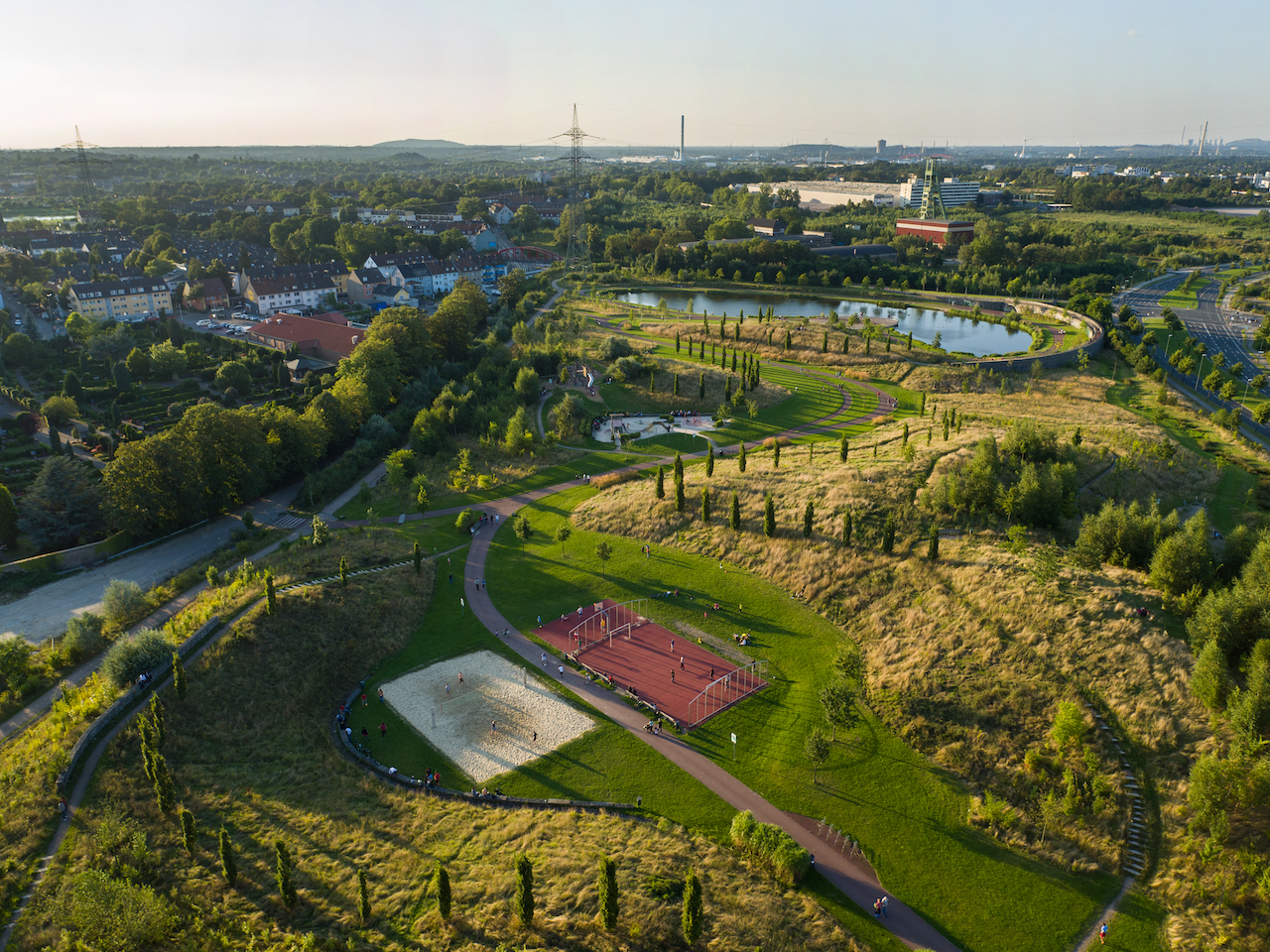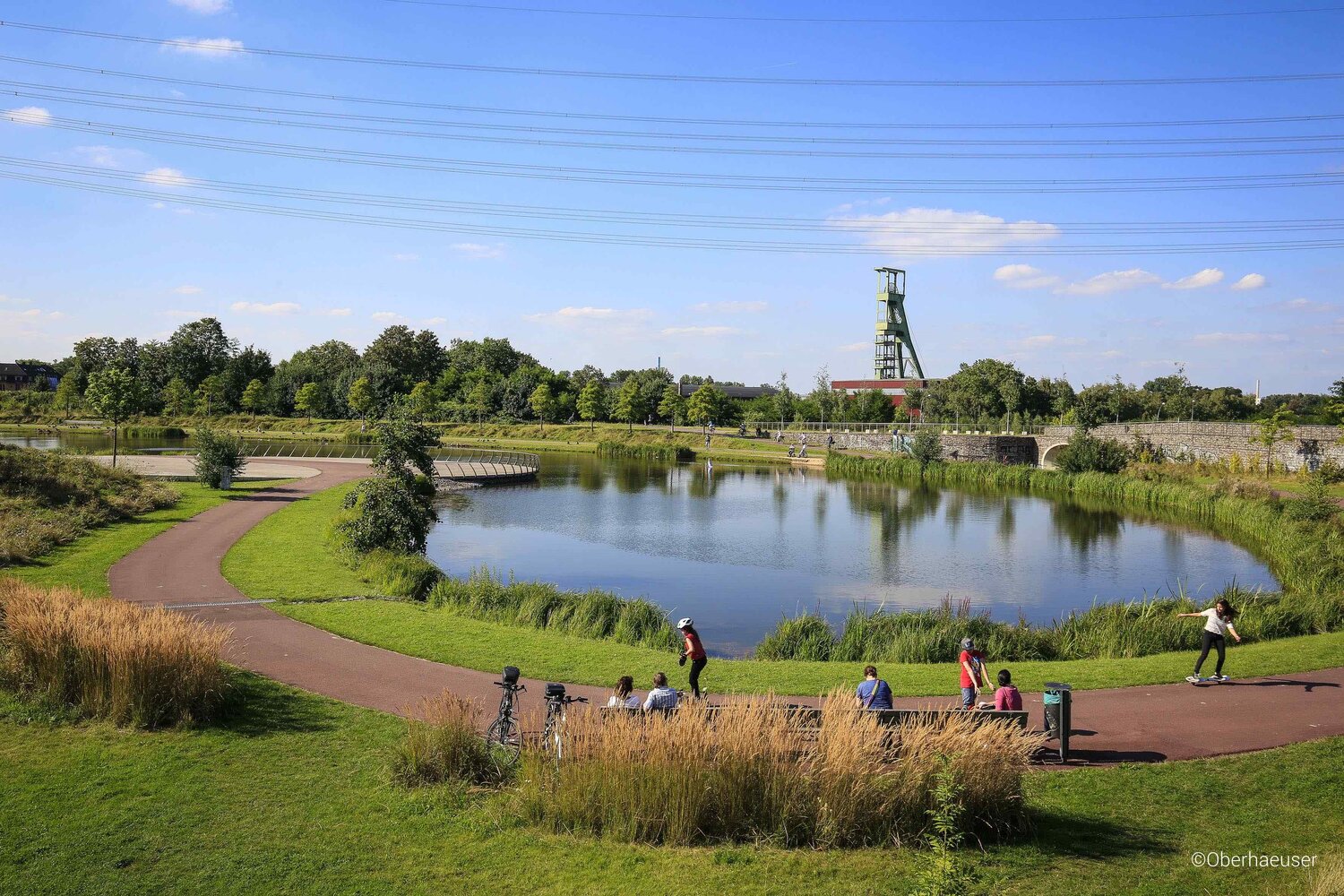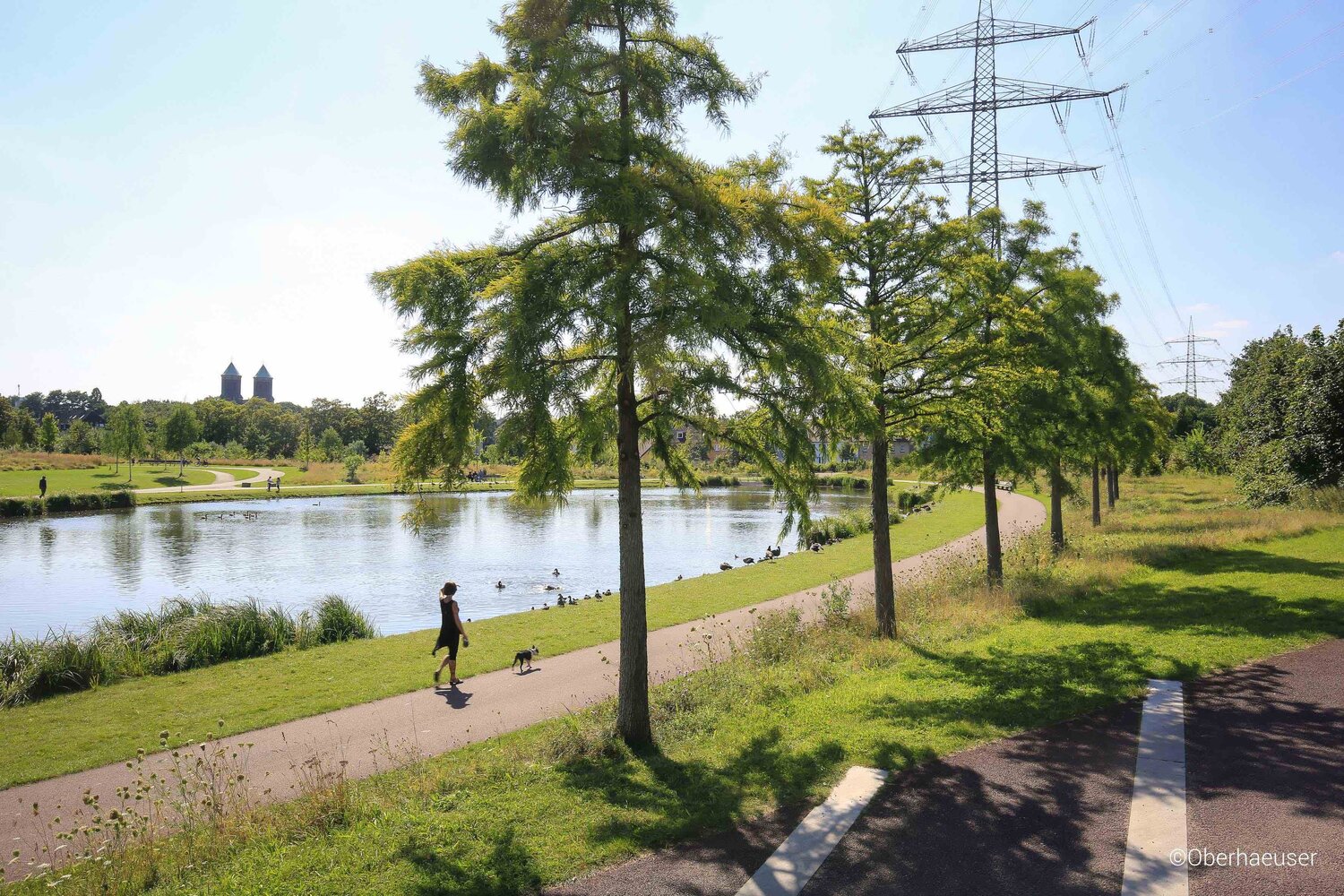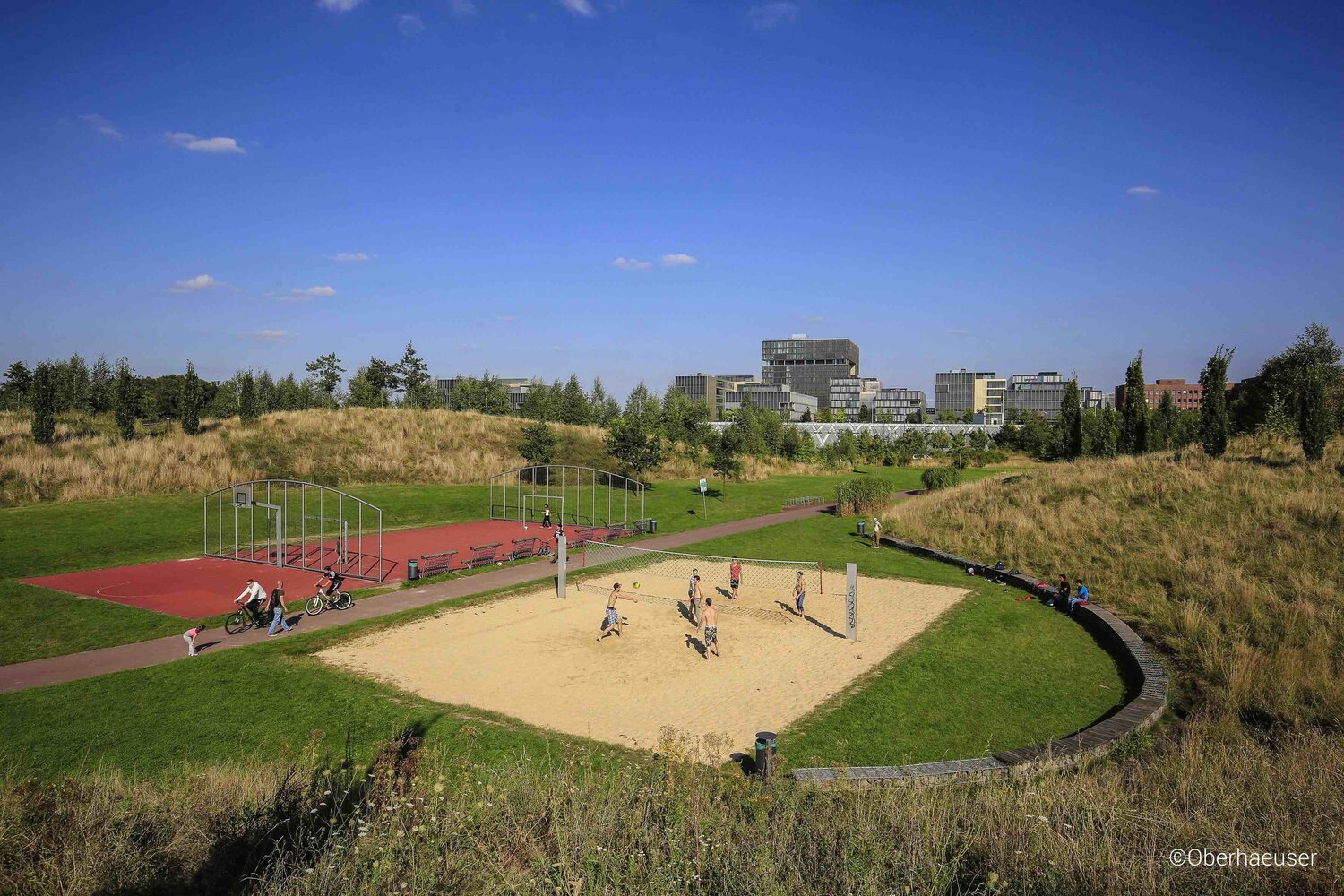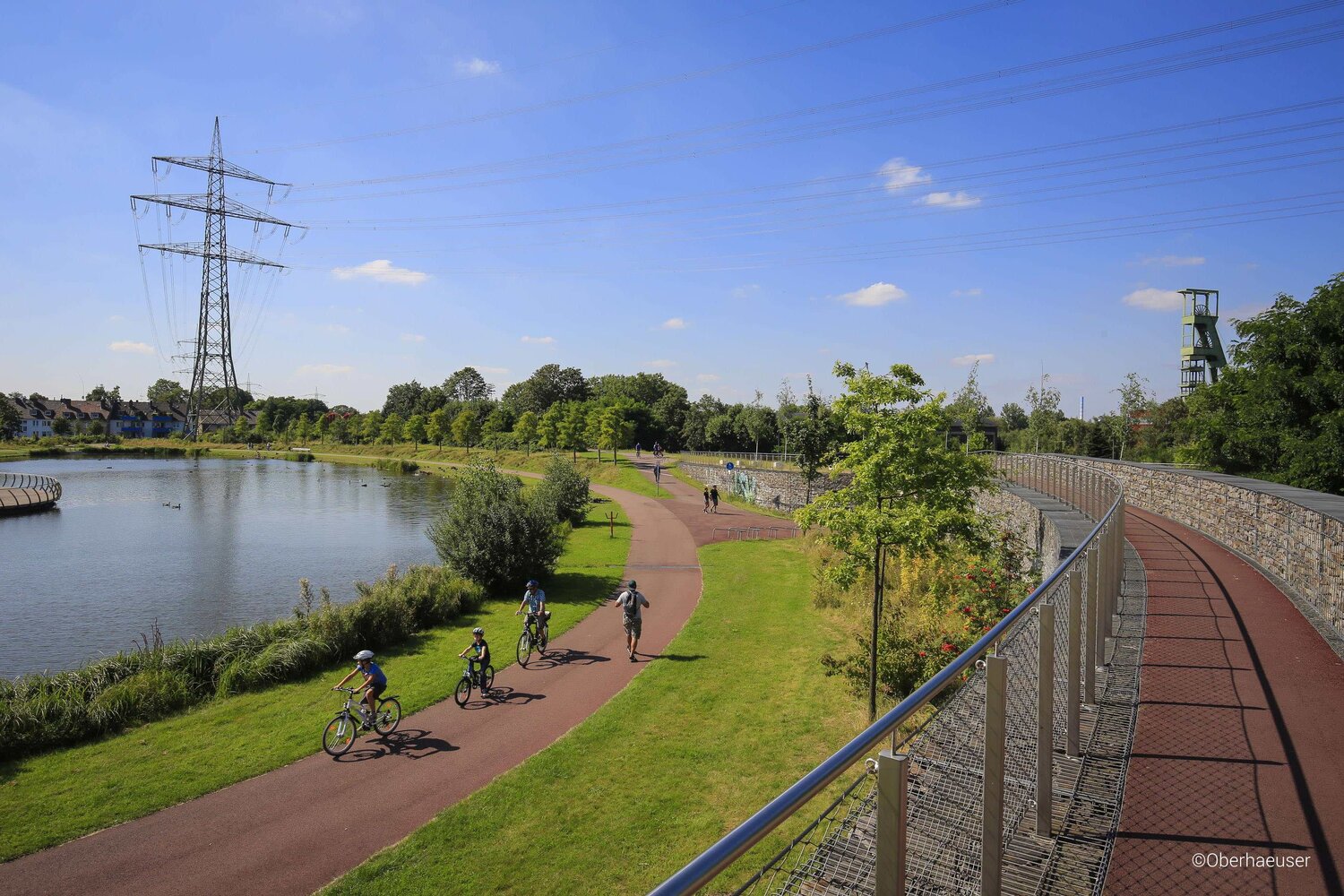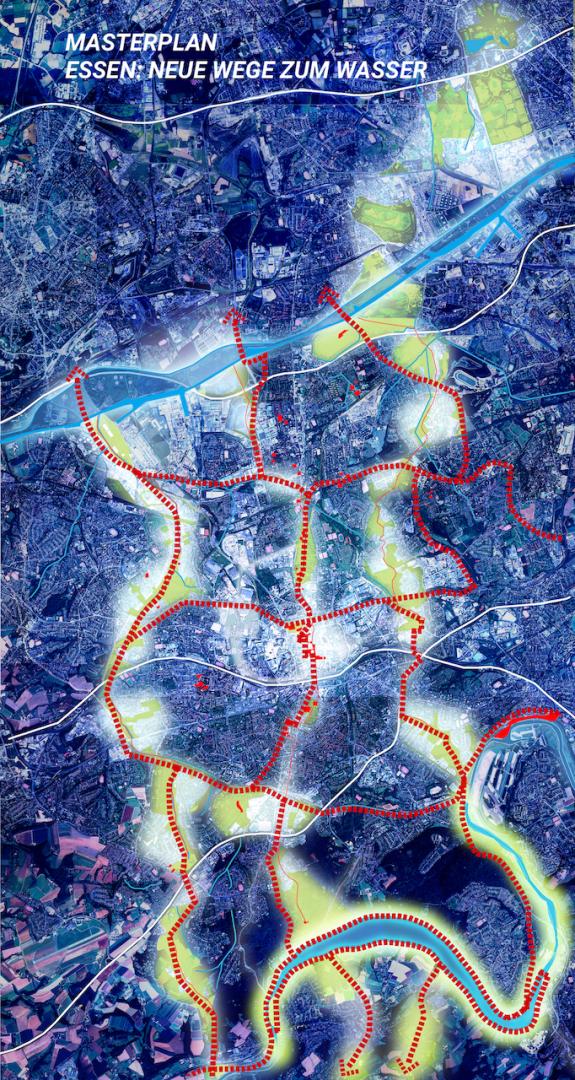"Neue Wege zum Wasser" und Krupp Park
Basic information
Project Title
Full project title
Category
Project Description
The redevelopment or “cultivation” of infrastructures within our environment becomes more important as urbanized areas are condensed like never before and the usage of outdated industries changes. The shift from construction to cultivation of the areas we are working on is inevitable. The Krupp Park in Essen, Germany is an example of the change of land use based on the change of societal values and the establishment of nature-based solutions.
Project Region
EU Programme or fund
Which funds
Other Funds
OP EFRE NRW, "Starke Quartiere – starke Menschen“ (SQSM), 2007
Funding of first construction phase.
Description of the project
Summary
The redevelopment or “cultivation” of infrastructures within our environment becomes more important as urbanized areas are condensed like never before and the usage of outdated industries changes. The shift from construction to cultivation of the areas we are working on is inevidable. An example of the change of usage based on the change of societal values is the Krupp Park in the city of Essen.
Essen is part of the Ruhrgebiet, a highly industrialized region of several cities which grew together to one metropolitan area due to the boom of coal mining. Next to the city center, where the historic Krupp steelworks were located, the production activity created a rift to the adjacent neighborhoods. By the development of the Krupp Park, the deep wound in the territory was healed and returned to public use. With the decision of Tyssen-Krupp to locate its new headquarters on the Krupp belt, the design of the new structure placed in the vast represent a strong signal of regeneration and invites public recapture. To achieve a near-zero land balance, only the most contaminated soil was removed and all other volumes stayed within the area by modelling the topography.
The processes of adaptation in a economic and ecologic way stress out the performance of urban systems. Especially disadvantaged urban areas need to be integrated in the urban fabric in a strategic foresight way. The Krupp-Park is part of the strategy "Open space creates urban space", related to the action plan "Essen: New paths to the water", following the goal to detect green open spaces, to connect, and to instrumentalize them.The hidden open spaces in the city receive new urban character and quality and give important impulses for the entire urban development.
Key objectives for sustainability
The strategy "from grey to green" for the entire city is using intensive and intelligent land-use and spacial betterment without new land consumption. The goal is to transform urban landscapes with social-compatible and preparatory spacial design interventions to reach a perceptible green future. The Krupp park is the beginnig of the urbanistic development of the Kupp belt, the 230 ha wide natural development area which re-connects the city center of Essen with its water. During its construction, 400.000 m3 of soil were moved and reused, reaching a near-zero land balance in spite of the soil contamination by the former industry and creating the characteristic five hills of the park. The 12,5 ha big green surface of the Krupp park is touching the city center of Essen and betters the urban climate. It's vegetative volume provides cooling evaporation and its topography and water system offer water storage and purification, two important aspects to establish climate resilience of the site and surrounding areas. The park entails a 0,9 ha lake as rainwater deposit, filled with the water volumes of the park, the roofs of the neighbouring TyssenKrupp quarter and surrounding areas. From the roofs it arrives within a channel to the park where it comes to the surface again and flows via natural ditches into the lake. The lake water is used for irrigation of the park and is being directed to a side stream of the Emscher river to support the ecological redesign of the river system. The appearance of the water flows in the park allow visitors to actively interact with the natural environment and enrich the return of high-quality public space to locals after almost 200 years.
Key objectives for aesthetics and quality
One way to arrive to Krupp park is the 101 km long over-regional bicycle highway that connects Duisburg and Hamm and tanges the Krupp park on its northern side. From here, one can see the big lake with its observation deck in the front and the 5 hills of the park behind. On the first hill, attached to the lake, there is a stepped amphitheatre for events with the first viewpoint on top, giving an orientation guideline panorama over the park and the city. The dynamic terrain allows a variety of entertainment due to diverse densities, cluster sizes, vantages and connections. The particular lush vegetation creates a unique recreation and discovery landscape with five activity areas for different user types. The bicycle lanes with touching and detaching pedestrian pathways are complimented with trails that climb the hills and cross the vegetation, creating areas of increased social interaction such as areas to be alone. The variety of routes and the space of activity areas allows very different group sizes to spend their time which creates a well-rounded social choreography. The design generates a nature relatedness as the users are enabled to directly engage with nature and to understand the ecological functioning of the park. The biodiversity in the park, inspired by the local ecology found, stimulates the senses visually, auditory, olfactory and kinesthetic. With the special sound of the poplar tree, the soft flower head of the grasses, the hilly silhuet of the landcape to just name some. For the user comfort and style, the illumination of all pedestrian and cycling paths is integrated in the pavements for a safe usage, better orientation and less light-pollution during the night.
Key objectives for inclusion
The winding pathways reach different destinations that offer a wide range of social inteeractions. The amphitheater, for instance, offers a space for performances or larger groups, interacting between the seating area and the observation platform of the lake which works as a stage. The goal was to create a park to attract everyone so it offers five activity areas: a playground for small children, one for preadolecents with ropes and climbing structures, multifunctional areas for adolecents for soccer, basketball, and beachvolleyball, a skate area and a fitness area for adults which all facilitate the usage for medium sized groups. But the park is not only for offering space for physical activity, ample seating and the wide meadows with sunny and shady parts invite to linger surrounded by nature. The design supports autonomous movements thanks to its organisational structure and the high clarity of spacial distribution. Symbolized by the unveiled water flows which connect the neighbouring commmunities, the design of the accompagning pathways also create a sense of bond and local belonging.
Results in relation to category
The guiding concept for this introduction of nature in the built environment is the one of green infrastructure. It implements a systematic fusion of actions such as nature and climate protection, the creation of urban green, the creation of cultural landscape, the construction of emission neutral mobility systems and the development of open water bodies. The landscape vision "Freiraum schafft Stadtraum" (Free space creates urban space), of which the Krupp Park represents an important component, is a broad strategy to build up step-by-step new urban landscape structures for different urban uses. The speciality of the Park is its territorial contextualization and derivation, from an industrial vast to a climate friendly neighbourhood space. The hydric connection from the lake to the Emscher river is not only strenghtening the biodiversity-network but introduces potential for development of recreational upgrades. The new developed landscape sustainably gentrifies the touching neighbourhoods, positively influences the air and climate and offers new living spaces for animals and plants.
How Citizens benefit
The site of the Krupp Park was inaccessible to the public before, without human interaction or nature stimulation. After almost 200 years it was returned back to the locals in form of high-quality public spaces with a high natural value and the citizen of Altendorf have received a direct and green connection to the city center.The park design intended to resolve the rift between the diverse neighbouring districts throughout the generation of public engagement and social collisions. The municipality of Essen provided a strong information campaign in the city, animating citizen to participate. Over 66 weeks, the visitors were able to get informed on site about the Krupp Belt, observe the construction process of the park and participate in more than 200 guided tours on the construction site. Alongside the 200 meter long, colourful site fence, the visitors were able to observe the construction development of the ThyssenKrupp Quarter. After the park was finished, the information campaign continued with the neighbourhood-office of Altendorf: Under the title "Heimatgefühle" (feelings of home), several interventions and topics were collected to create a strong bond and identification with the new space of the city. The project started with a competition for pupils of the 8 public schools in Altendorf, which focused on the history and perspective of the neighbourhood. A big planting action in October 2008 was highly apprecheated by the neighbours and created an integrative effect, bringing together the neighbours from all surrounding district. Those activities were mainly performed by the press and communication department of the municipality of Essen. As the water merges in a process that is transparent to the public, the water and vegetation become communal, showing that nature relatedness can stimulate trust and a sense of ownership.
Innovative character
The Krupp Park is part of a holistic development approach that started in already in the 90s: Based on the United Nations Conference on Environment and Development, Rio de Janeiro, 1992, the city of Essen elaborated an Urban Ecologic Article for the North of Essen in 2000. It established nature protection goals and the base of a landscape plan to protect and develop the nature of the city. From this appeared that the West of the city lacks of green public space, of which the strategy "Freiraum schafft Stadtraum", implemented in the Masterplan "Essen: Neue Wege zum Wasser" arose in 2005-2006. The Masterplan foresees green-blue rays that cross the city from north to south, fortifying the ecosystem-connections between the rivers Emscher and Ruhr which flow in the North and the South of the city. The competition for the Krupp Park was held in 2006, representing one section within one of the green-blue corridors of the Masterplan. The Masterplan, its constant evolution and the projects resulting from it contributed to the awarding as European Green Capital 2017 and continues to guide the urban development until IGA Metropolregion Ruhr 2027.
In the heavily industrialized Ruhr Region, the confrontation with huge post-industrial areas is ever-present. The idea is to give the exploited natural environment back to the people and so did the company ThyssenKrupp decide to put its new headquarter on this place of Krupp's first steelwork - regenerating the nature and giving it back to the people. The project turned the steelwork into the headquarter with public access and its landfill into the public park, a private investment in public space as symbolic decision and compensation to his origin. Nature-Based solutions are implemented in the landscape design in many ways: the collection of water from the headquarter roofs and the pedestrian areas, the pre-filtration of the water and the fountain that works with heavy rain, displaying the water flows.

